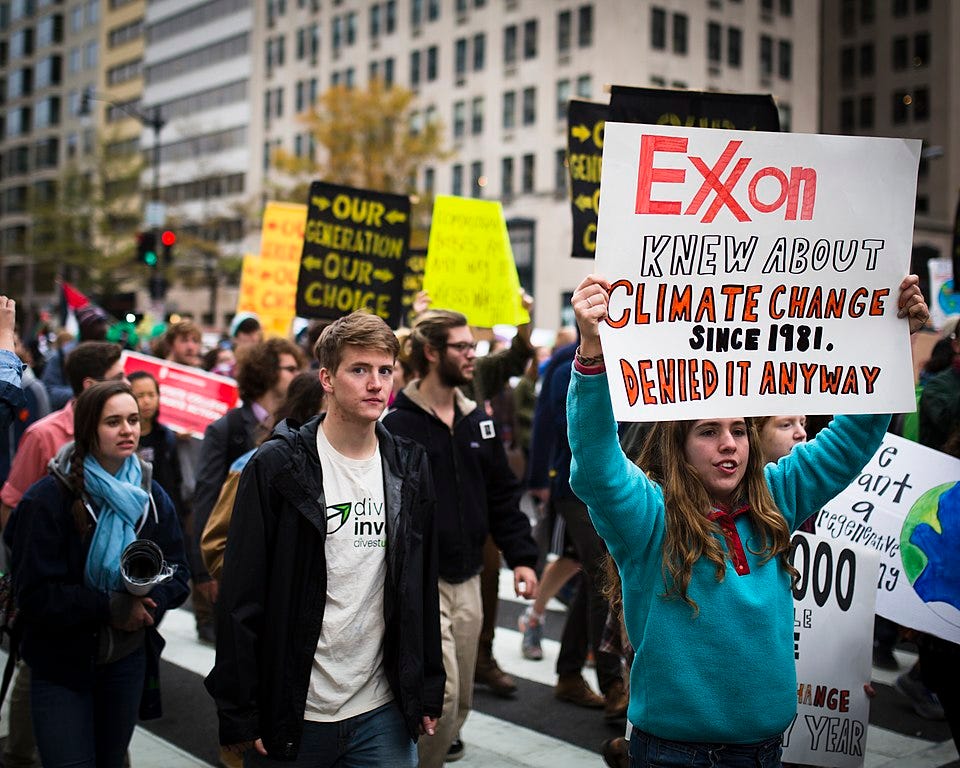Big Oil's climate moment; plus new ESG bill to override Trump attack
Welcome to Callaway Climate Insights. ESG investing took two huge steps forward today. Read more, and please share.
Today’s “Super Blood Moon Eclipse,” which NASA Goddard says would make a great name for a metal album, was the first total lunar eclipse in nearly two and a half years and is the “most super” of the year’s supermoons.
In the wake of the Trump Administration’s last-ditch attempt to discourage environmental, social and governance investing in retirement plans last year, two members of Congress are unveiling new legislation that would enshrine ESG as a legitimate investment option.
The Financial Factors in Selecting a Retirement Plan Investment Act would overturn the Department of Labor rule under Trump, make it OK for financial advisers and retirement plans to offer and consider ESG options, and even allow investors to consider ESG options as tie-breakers when confronted with a difficult choice.
While many financial advisers have discussed ESG with their clients all along, the confusion surrounding the controversial Trump rule prevented retirement plans and 401(k)s from adopting ESG principles or offering products to their customers. If passed, the new legislation will set the stage for a new push in the ESG space into the massive retirement-savings universe.
It will also, at least for now, stem concerns that sustainable investing is somehow a cyclical strategy.
More insights below. . . .
Don’t forget to contact me directly if you have suggestions or ideas at dcallaway@callawayclimateinsights.com.
Financial advisers asked to lead the charge in ESG investing
. . . . The new bill to clarify ESG’s role in retirement plans is a welcome relief for the legal departments of asset managers, but in reality fund managers and financial advisers have been ahead of the curve in discussing ESG strategies with their clients, writes Michael Molinski. With more large companies instructing their advisers to bring ESG ideas, the debate is now over how to define them. Impact? Hedge? Divestment? Some advisers are letting their clients do the talking. . . .
Wednesday’s subscriber insights: Exxon, Shell, Chevron hear the climate music; plus California’s offshore wind bid

. . . . Things had been looking decent for oil companies recently, with rising prices and revenue. But behind the scenes, trouble has been brewing — and it truly came to a head Wednesday, with a key Dutch court decision for Shell (RDS.A) and a fierce fight at Exxon Mobil’s (XOM) annual general meeting, where shareholders voted to install at least two new independent directors to the company’s board. And, the votes over two others from the dissident slate were too close to call. Want more? Chevron (CVX) shareholders approved a request the company cut its emission — and its customers’ emissions. Read more here. . . .
. . . . Offshore wind projects have come relatively late to the U.S., with Europe soaring as we’ve been sleeping. But after a huge wind farm off the Massachusetts coast was announced, California is now countering with something even bigger. And it floats! Read more here. . . .
. . . . During its first investor day event under the leadership of CEO Jim Farley, Ford (F) announced Wednesday that it anticipates electric vehicles will make up almost half of its global sales by 2030. Ford shares leaped more than 8% in late trade. The company’s roadmap, part of a turnaround plan, calls for it to increase EV investment to more than $30 billion through 2025. Farley said, “This is our biggest opportunity for growth and value creation since Henry Ford started to scale the Model T, and we’re grabbing it with both hands.”. . .
Editor’s picks: Harvard engineers energy savings; GE’s building floating wind turbines
. . . . Harvard’s new Science and Engineering Complex is, according to the university, the most significant new building constructed by Harvard in a generation. The building is wrapped in a facade made of 14,000 panels of precisely formed and cut stainless steel, Fast Company reports. Its purpose is to control light and heat that enters the building, a stationary control system to reduce heating and cooling requirements and bring the complex’s carbon emissions down by an estimated 42%. The building, with 500,000 gross square feet, was built last year by Stuttgart, Germany-based Behnisch Architekten.
. . . . General Electric (GE) this week described its progress in the development of floating wind farms. Floating turbines could open more ocean areas to offshore wind development, but present major engineering challenges. GE received a $3 million award from the Department of Energy to support the two-year project, which started last year, The Verge reports. GE says its concept is based on what’s called control co-design, in which the entire system — the turbine and platform, as well as the control algorithms — are designed in conjunction. This in turn makes it possible to avoid putting additional mass into the system to withstand high winds and waves, resulting in a lower levelized cost of energy, or LCOE, which is the effective price of electricity generated with the resulting floating offshore wind technology.
Subscribe with a free 30-day trial to read all our stories and columns.
Data driven: U.S. takes second shot at nuclear power

. . . . With the U.S. gearing up for a carbon-free electricity revolution, nuclear power has a potential second shot at prominence after the 2011 Fukushima nuclear disaster and the staggering cheap costs of fracking depressed interest, George Barker writes. Now, President Joe Biden’s greenhouse gas reduction plan specifically shouts out leveraging existing carbon-free nuclear infrastructure while the Department of Energy has $10.9 billion of loan guarantees available for advanced nuclear energy projects. Read more here. . .




